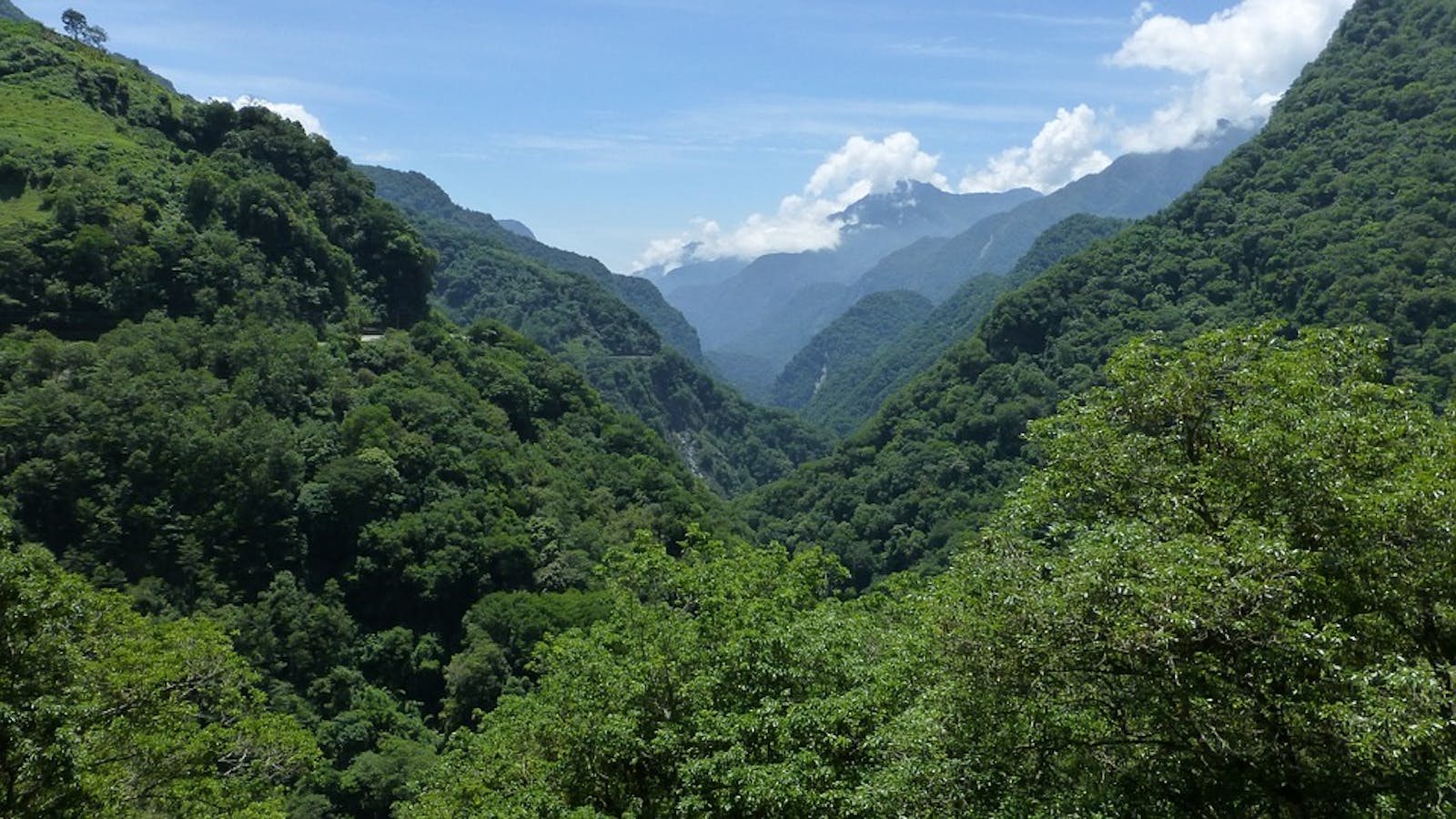Taiwan Subtropical Evergreen Forests
The ecoregion’s land area is provided in units of 1,000 hectares. The conservation target is the Global Safety Net (GSN1) area for the given ecoregion. The protection level indicates the percentage of the GSN goal that is currently protected on a scale of 0-10. N/A means data is not available at this time.
Bioregion: South China Subtropical Evergreen & Monsoon Forests (IM13)
Realm: Indomalaya
Ecoregion Size (1000 ha):
3,347
Ecoregion ID:
283
Conservation Target:
60%
Protection Level:
3
States: Taiwan
Flying squirrels do not actually fly, but they can glide for over 100 m between tall trees using the flaps between their front and back legs as wings, and the tail as a rudder to steer them towards their target tree. Two species of flying squirrels grace across the canopy of the Taiwan Subtropical Evergreen Forests ecoregion forests: the red and white giant flying squirrel and the Indian giant flying squirrel. Both of these nocturnal animals have evolved into subspecies after being isolated from mainland populations since the mid-Pleistocene era, about a million years ago.
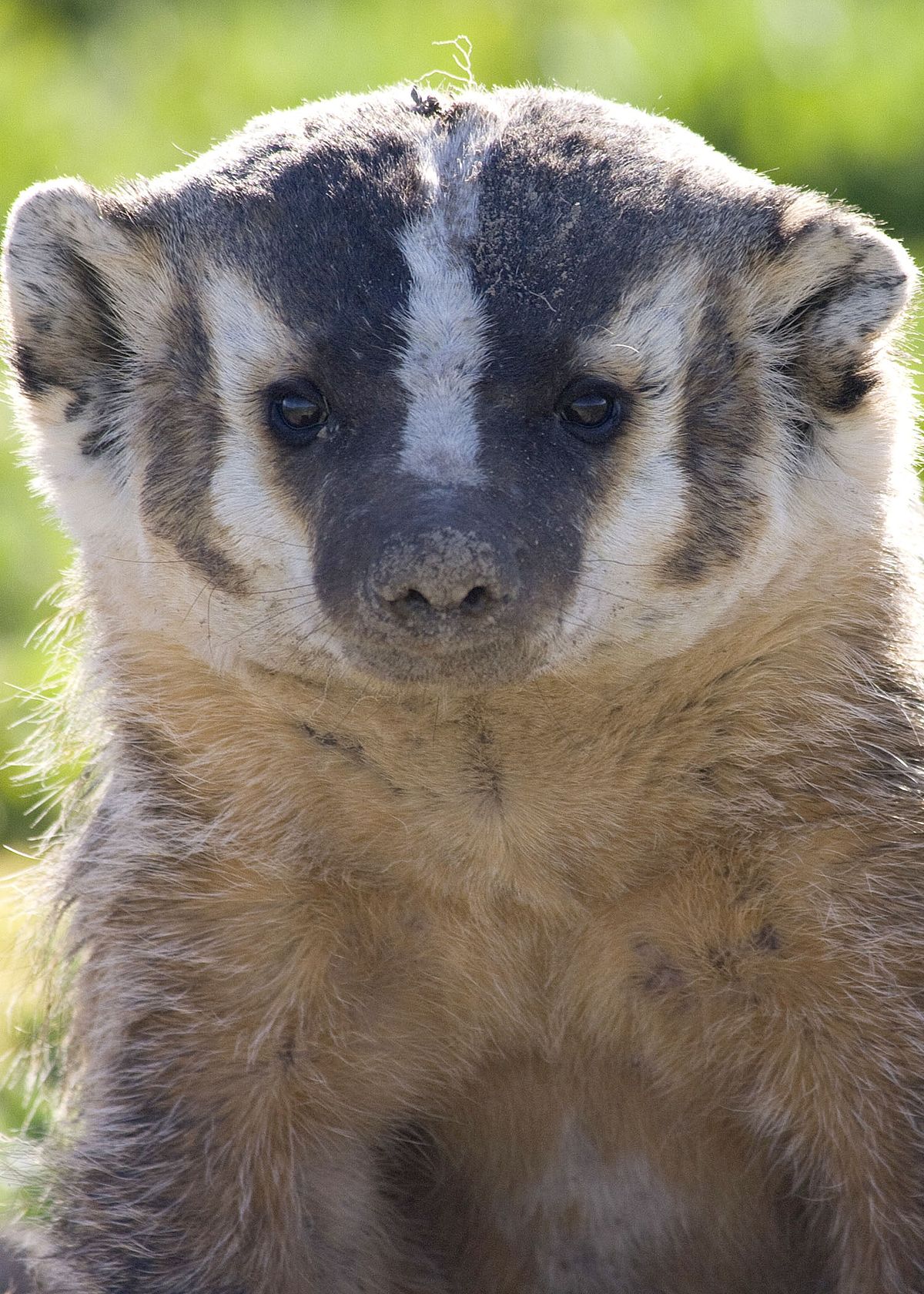
The flagship species of the Taiwan Subtropical Evergreen Forests ecoregion is the Formosan ferret badger. Image credit: Creative Commons
The ecoregion represents most of the forests of the island of Taiwan, except for the southernmost section that lies to the south of the Tropic of Cancer. A north-south mountain range runs along the length of the island, rising steeply on the eastern side, with about 200 peaks over 3,000 m in height. The highest is Mount Yushan, meaning Jade Mountain, at 3,952 m, making this the fourth highest point of all islands in the world.
The western sides slope more gently to coastal plains. Summer monsoons between May and October brings rainfall, which varies with elevation; below 500 m, the average annual rainfall ranges from 1,800 to 2,500 mm, whereas elevations above 2,500 m can receive up to 2,900 mm of rain. Mean monthly temperatures in the lowlands range from 15 to 28ºC.
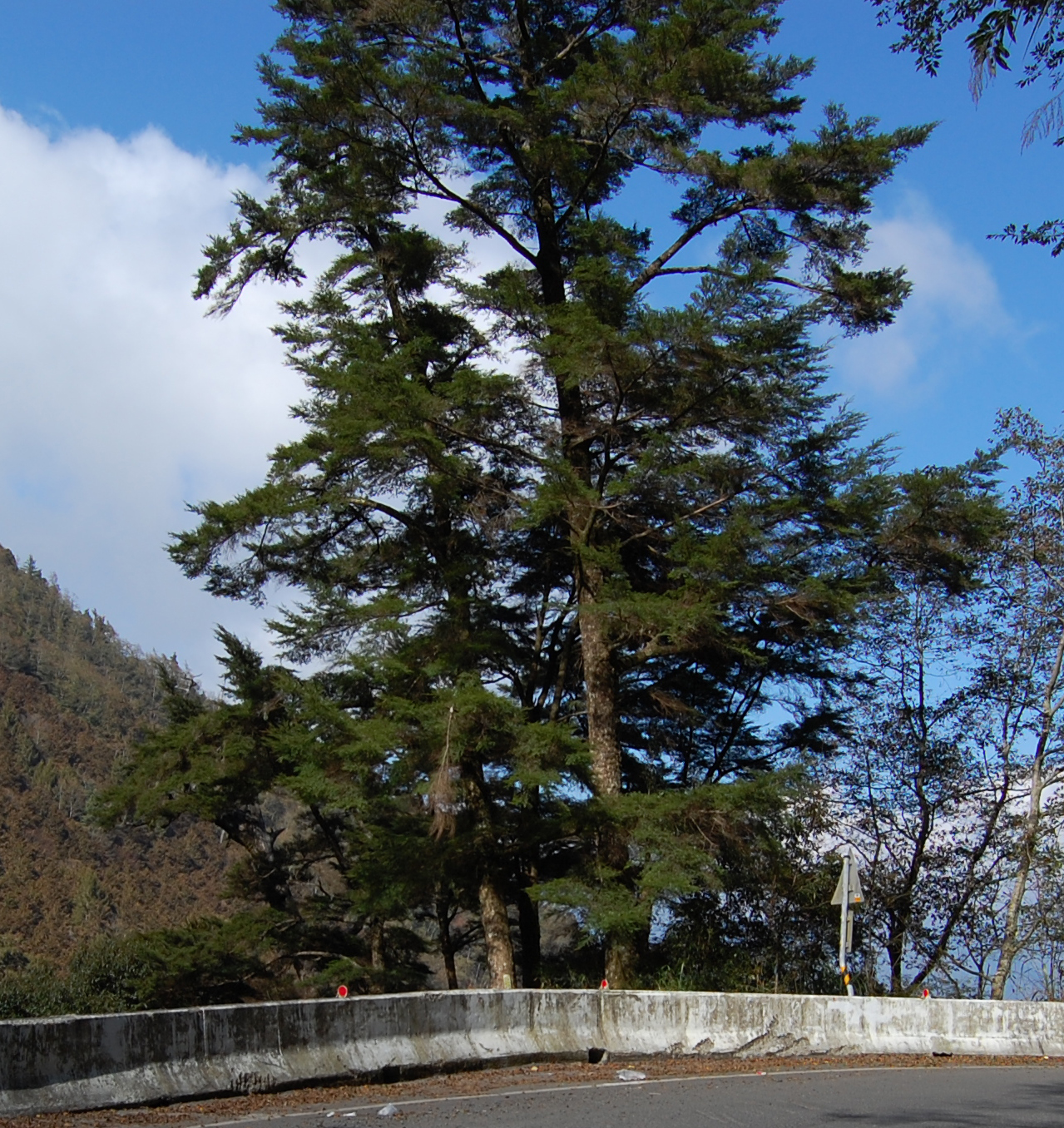
Tsuga chinensis. Image credit: Creative Commons
Taiwan is on the boundary between the Holarctic and Paleotropical floristic kingdoms and include floristic elements of both. The broadleaf forests can be divided into vegetation zones based on elevation: the Ficus–Machilus zone in the lower elevations dominated by Machilus japonica, Ficus irisana, F. benjamina, F. microcarpa, Bischofia javanica, and Neolitsea konishii; the Machilus-Castanopsis zone dominated by Castanopsis cuspidata, Cyclobalanopsis longinux, Beilschmiedia erythrophloia, Quercus variabilis, and Schima superba; and the lower and upper Cyclobalanopsis zones dominated by Castanopsis cuspidata, Cyclobalanopsis longinux, C. morii, C. stenophylloides, Trochodendron aralioides, Machilus zuihoensis, M. japonica, Schima superba, M. thunbergii.
Above 3,000 m the forests are mixed broadleaf, dominated by Alnus formosana, species of Acer, and Tsuga chinensis. The highest elevations have pure stands of conifer forests with Tsuga chinensis, species of Picea (spruce) and Abies (Fir).
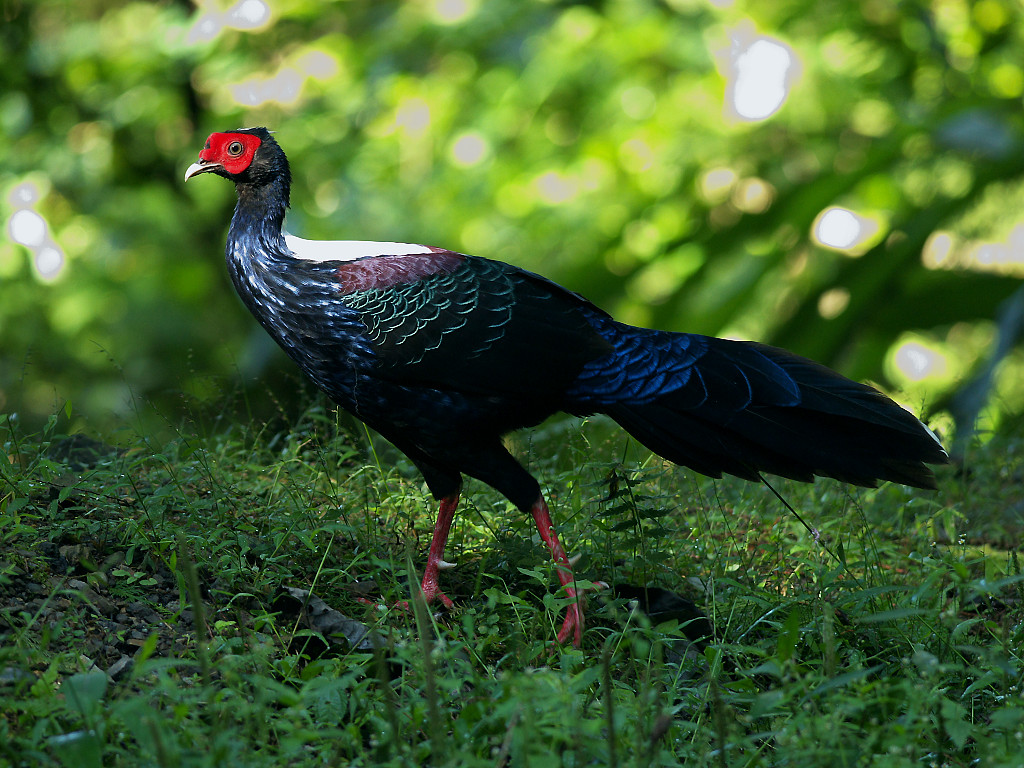
Swinhoe's pheasant. Image credit: Creative Commons
The larger fauna has been extirpated from the island. These include predators such as the clouded leopard, and the Eurasian otter. The Asiatic black bear is extremely rare. The Sika deer, Taiwan’s largest ungulate, was once extirpated, but has now been reintroduced into the wild through a species recovery program.
Other species of conservation importance include smaller predators such as the leopard cat, gem-faced palm civet, crab-eating mongoose, Formosan ferret badger, Siberian weasel, and yellow-throated marten,[vii] and larger herbivores and omnivores such as the Sambar deer, Formosan serow, Reeves’ muntjac, Formosan macaque, and Chinese pangolin. Several of Taiwan’s restricted-range bird species overwinter here, including the Japanese night-heron, Nordmann’s greenshank, and spoon-billed sandpiper.
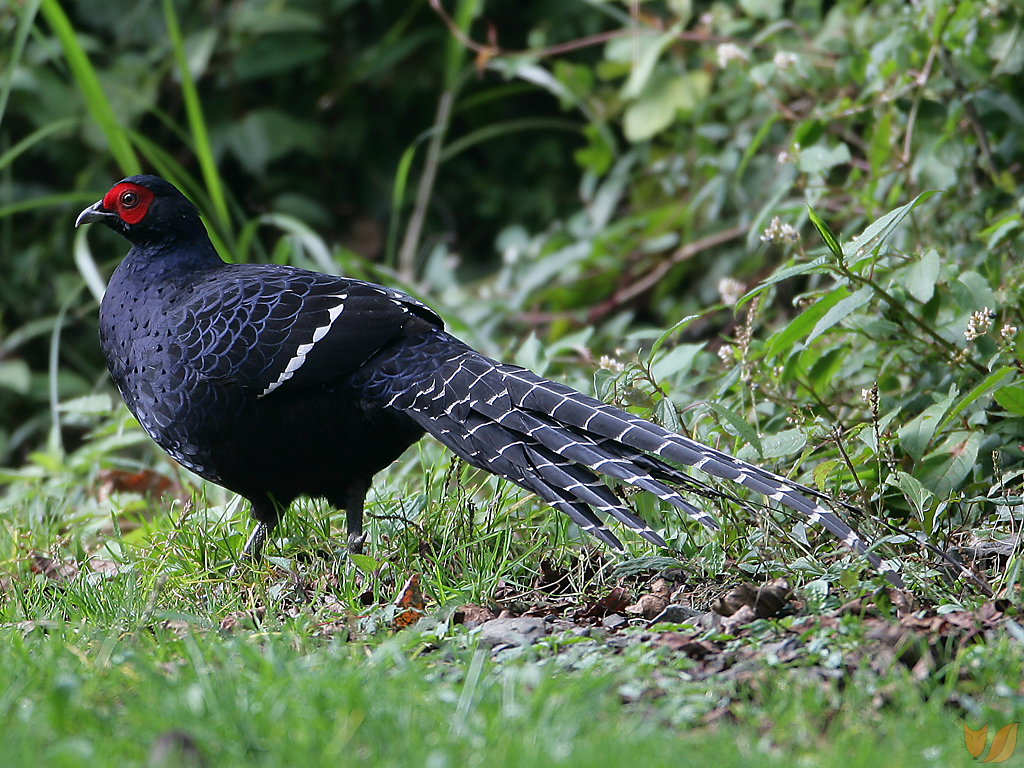
Mikado pheasant. Image credit: Creative Commons
About 68% of the forests remain, and 20% of the ecoregion is protected, mostly along the central mountains. Most of the lowland forests have been cleared for agriculture and industry, with only a few remnants left. Even the remaining forest cover estimates likely includes monoculture plantations of non-native species.
Thus, the recommended priority activities are to: 1) bring additional forests in the lower elevations into the protected areas system for more representation; 2) ensure the ecological connectivity between montane and lowland forests; and 3) protect rare species from poaching.
Citations
- Tang, C.Q., Chiou, C.R., Lin, C.T., Lin, J.R., Hsieh, C.F., Tang, J.W., Su, W.H. and Hou, X., 2013. Plant diversity patterns in subtropical evergreen broad-leaved forests of Yunnan and Taiwan. Ecological research, 28(1), pp.81-92.
- McBeath, G.A. and Leng, T.K., 2006. Governance of biodiversity conservation in China and Taiwan. Edward Elgar Publishing.
- López-Pujol, J., Zhang, F.M. and Ge, S., 2006. Plant biodiversity in China: richly varied, endangered, and in need of conservation. Biodiversity & Conservation, 15(12), pp.3983-4026.
